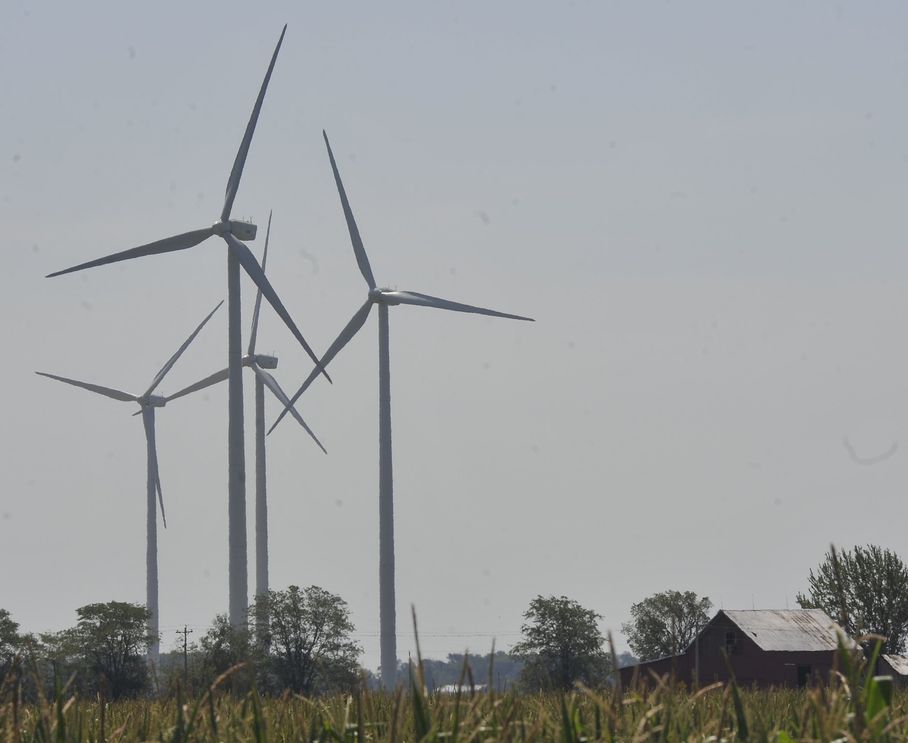One month ago (well, one month and 4 days, but who’s counting?), Ohio became the first state in the country to freeze its clean energy standards, when Governor Kasich signed SB 310 into law. At the same time, the Governor signed HB 483, the Mid-Biennial Review of the budget, into which the Ohio GOP slipped a new setback requirement for wind turbines.
The American Wind Energy Association, along with other opponents of these bills, warned lawmakers about their potential impacts on the state’s budding clean energy industry. In a press release issued shortly after the Governor signed both bills into law, AWEA said:
Gov. John Kasich and the Legislature today abandoned $2.5 billion in current wind energy projects, which now face cancellation along with jobs, leases, payments to local governments, and orders for factories, over a needlessly restrictive setback requirement that Kasich signed into law today.
In a press conference yesterday, Governor Kasich tried to defend his record on clean energy and environmental issues. He once again claimed that he played an essential role in “moderating” SB 310, ensuring that the bill only froze the standards, rather than rolling them back altogether. He also defended the increased setback rule for the first time publicly, telling a group of business leaders in Bellview,
“Private property rights are important. People choose to live somewhere. You just don’t go in there and disrupt their life.”
Now, the Dispatch piece does not explain if the Governor feels the same way about oil and gas wells, for which the Ohio Revised Code only mandates a 100- to 150-foot setback rule; given his history with the fossil fuel industry, I’m going to guess not. But based on the Governor’s comments, it would seem like SB 310 and HB 438 should have minimal impacts.
Senator Bill Seitz (R-Cincinnati), who never met a hyperbolic statement he didn’t like, echoed the Governor’s views. In an article on Gongwer (paywalled) from May, he said,
Today is just the latest in a long line of sky-is-falling hyperbole coming out of their camp. If you’re serious about it, you’d be in there talking to the people that are actually going to vote instead of on the airwaves and jumping up and down at hastily contrived press conferences.
So, one month later, let’s take a look at the clean energy landscape in Ohio. Were those of us opposed to SB 310 and HB 483 really just fear mongering to get our way, as the Ohio GOP has claimed? Would that this were true. In recent days, two major renewable energy companies have stated that they are delaying utility-scale wind installations, and they may end up scrapping the projects altogether.
On Friday, the Lima News reported that Iberdrola Renewables, the company that built the Blue Creek Wind Farm in western Ohio, has suspended work on both its Hog Creek and Leipsic Wind Farms. Hog Creek, which has already been approved by the Ohio Power Siting Board, would include 35 turbines, generating approximately 67 megawatts (MW) of electricity. Iberdrola is awaiting final approval for the Leipsic installation, which would have 75 turbines turning out 150 MW of power.
The next day, Everpower Renewables said that one of its projects, the Buckeye Wind Farm in Champaign County, may never get off the ground, despite the fact that the company has already invested millions in it. The project, which includes two phases, would see the company build roughly 100 turbines, producing enough electricity (200 MW) to power 50,000 houses. Buckeye would also generate $1.2 million in annual tax revenues, create more than 100 construction jobs, and offset 308,000 tons of CO2 each year. Yet, due to a lengthy legal battle and the knock on effects of these two bills, Everpower may have to abandon Buckeye entirely.
While it may seem unlikely that the bills would affect projects that have already been approved (particularly given the fact that the wind siting amendment in HB 483 grandfathered in such projects), that no longer appears to be the case. The way the law is written, the new, more restrictive siting requirements would kick in if any changes were made to a project’s scope of work. These changes could include utilizing a newer wind turbine model.
According to AWEA, Ohio ranked 26th in the country last year for wind power, generating 432 MW. These two bills could effectively derail projects that would generate a combined 417 MW, or 96.5% of this total. So much for the supposed hyperbole from SB 310 opponents. It may be easy to decry the other side as nothing more than another Cassandra, but we should remember one thing – Cassandra was right.
– Tim Kovach, Northeast Ohio Sierra Club Executive Committee Member
